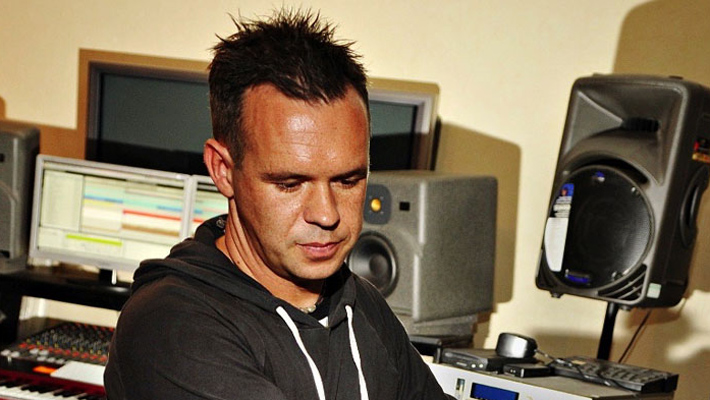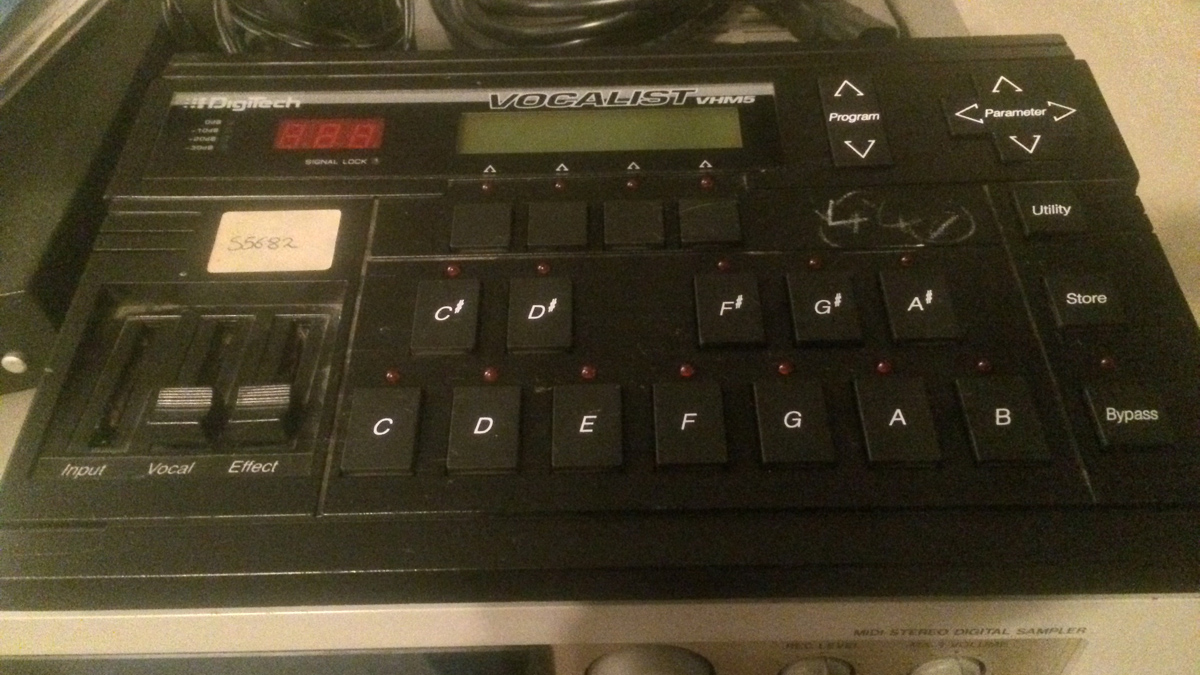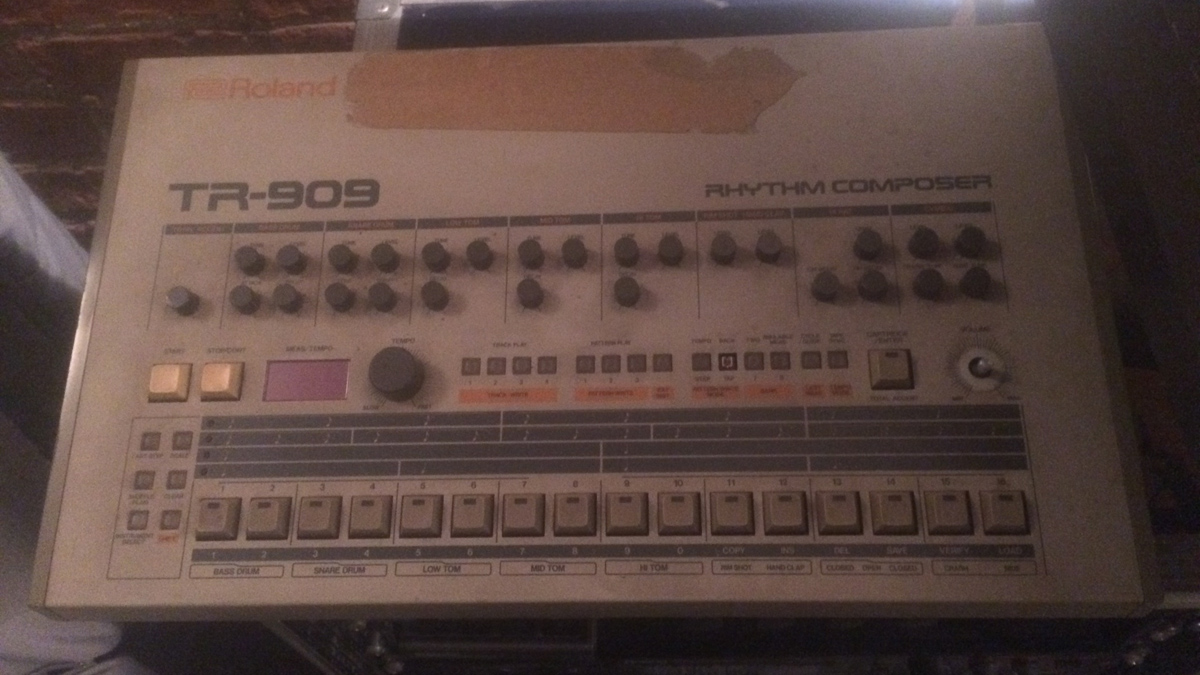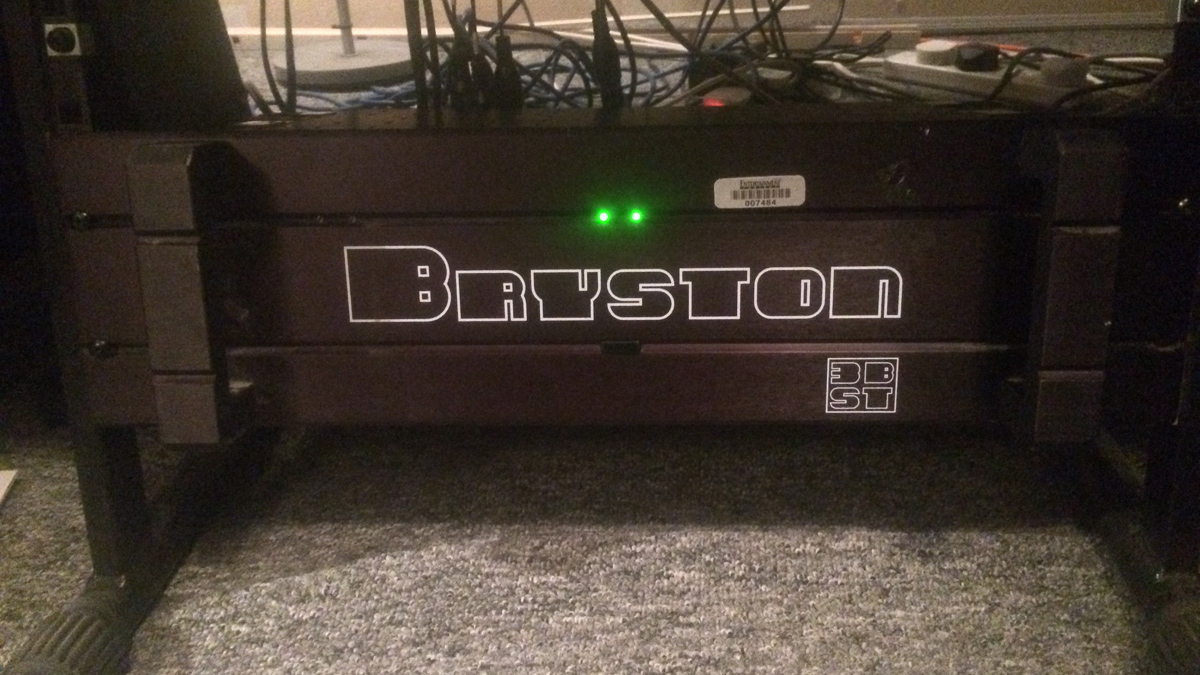Me in my studio: Utah Saints
The sample-loving electronic music legends on their classic gear

The duo show us Something Good
Described as 'the first stadium house band’ by KLF’s Bill Drummond, Utah Saints (AKA Tim Garbutt, pictured above, and Jez Willis) had three top 10 hits in the '90s and have registered another five top 40 chart placings since.
The duo remain producers and DJs, performing around the world. They're currently working on new music and trailer soundtracks for Hollywood movies, while also finding time to curate a stage at Beat-Herder Festival.
We asked the band to take photos of the studio gear that they treasure and tell us why they love it. Read on to find out which processor they used to “murder” a Girls Aloud vocal, how they ended up buying a 909 from Blancmange, and why they still can't bear to get rid of their Atari ST.
Utah Saints are represented by MN2S, who are celebrating 20 years in the business #MN2S20.

Digitech Vocalist VHM5
“As far as we know this was the first Vocalist that came out - we picked it up in 1991. At the time it was quite a breakthrough as it could pitch vocals in real time and could create harmonies. It could also, in theory, correct vocals if they were not quite delivered in tune, and it could be controlled via MIDI.
“In true Utah fashion, though, we never really read the manual and most of the presets were nicely set up harmonies which we weren’t really interested in. But it did have a few really good settings and, on our fourth single, which was called I Want You (on which we sampled Slayer's War Ensemble) we used this on Jez’s vocal to create the chorus.
“On our second album, Two, we used this again when we sampled Chrissie Hynde from the track I Go To Sleep by The Pretenders on our track Lost Vagueness. That was probably one of our best ever tracks and was never a big hit.
“We were lucky enough at the time to get a clean vocal stem which Chrissie gave us. We had tried many different things with it, and then one day we put it through the Vocalist and had it on a vocoder setting. As vocoders go – based on how you would normally it expect one to sound - it was terrible. It was almost like a token preset just added on at the end when it was made, but the way it worked with Chrissie’s vocal, it just sounded amazing. It was almost like, as it was the first Vocalist model made, it was still quite unrefined, so if you didn’t use it how the instructions wanted you to, then you could get some really good stuff out of it, but you had to really play around with it.
“We also got asked to do a Girls Aloud remix once, so we just put everybody’s vocals through the Vocalist. I remember a lot of their fans saying that we had murdered the vocal and that what we had done was criminal...”

Roland TR-909
“The original 909 still has, and always will have, a special place in our studio. There's also some good history to this particular model of ours.
“We were recording in London in '94 and decided that we needed to try and get one of these secondhand, so we answered an advert from someone who was selling theirs and they happened to be from the 80’s synth pop band Blancmange. It still has a cartridge sat in the back which is labelled 'Album tracks' from 1985.
“Recently, when legendary techno DJ Jeff Mills was in Leeds, we lent him this one, as he needed a 909 for his show. It has a bit of wear and tear on it as you can see - it needs a few buttons and dials replacing - but it still works as good as the day we got it, and if you are making house and techno this is still the definitive machine to have in your setup.”

Bryston 3B-ST amp and KRK 9000B speakers
“With our studio monitoring we were strongly influenced by legendary studio producers like Flood, Alan Moulder and Mark ‘Spike’ Stent.
“We spent a lot of time in the mid-nineties recording and doing remixes down in London at places like Olympic Studios and The Townhouse, and we worked with Spike quite a lot. It was him who introduced us to the KRKs. They are not the best speakers - there are probably a lot of things around now that would blow them out of the water - but we still use them and, most importantly, we trust them when doing mixdowns and when listening back to mixdowns that we have done in other studios.
“They have amazing clarity and warmth, and you can hear absolutely everything. Sometimes they may be a little bright in the top end (you always have to bear that in mind) and they are maybe geared a little bit more towards doing radio mixes rather than full on club mixes, but we also have the standard Yamaha NS10s, the Mac speakers, the car, the kitchen and a friend’s studio next door (who has some Focals). Between this combination, we get there in the end!”
“The Bryston (again, Spike used this) is a great amp as well, and for the money there was nothing around that could touch it. You would probably end up paying three times as much to find an amp that would come close.”

Decks and CDJs
Tim: "I Started out as a DJ before Utah Saints and was a DMC Semi Finalist back in ’88. My hero was DJ Cash Money. Jez was in industrial and electronic bands before Utah Saints and ran his own label. He also DJ'd and promoted nights in Leeds right back in the day, so when we met we both had massive vinyl collections.
“All our music was based on sampling, so we have always had a DJ setup running in the studio, as it has always been a really fast way of getting ideas and inspiration when starting tracks, especially now that, when you can use the Pioneer CDJs, you can just loop things round and try them on the fly.
“I still have two setups at home as well; one that's based on my original Technics 1200s and a scratch mixer, and another which uses the Pioneer 2000 Nexus and RMX1000. I also run Serato and use Rekordbox.
“We always try to keep up to date with all the latest gadgets as I really love this side of things, but at the same time, you cannot beat picking up two bits of vinyl and having a straight up mix”

Atari 1040ST
“Although today our weapon of choice is Ableton Live on a Mac (running lots of internal plugins and some outboard) we started out on the Atari 520 and 1040 running Cubase.
“All our early tracks were made on this, including Something Good and What Can You Do For Me, so it has a special place with us. Every so often, if we want to re-record or remix it, we have to switch the Atari on and try and grab the MIDI from an early track we made, and it is a very temperamental piece of equipment these days. Sometimes it won’t start up at all, and then the next day it will, and then when you do get it going and try to load a floppy disk, then it says that the data is corrupted, so it can be very hit and miss.
“The ST had no audio function on it at all and was just controlling the MIDI side of things, but the timing on it was impeccable and all our initial tracks were done on this. It was hooked up to the Akai S900 and S1000 samplers and a couple of sound modules like the Oberheim Matrix 1000 and Yamaha TX81Z on a small desk in Jez’s bedroom.”

I’m the Deputy Editor of MusicRadar, having worked on the site since its launch in 2007. I previously spent eight years working on our sister magazine, Computer Music. I’ve been playing the piano, gigging in bands and failing to finish tracks at home for more than 30 years, 24 of which I’ve also spent writing about music and the ever-changing technology used to make it.